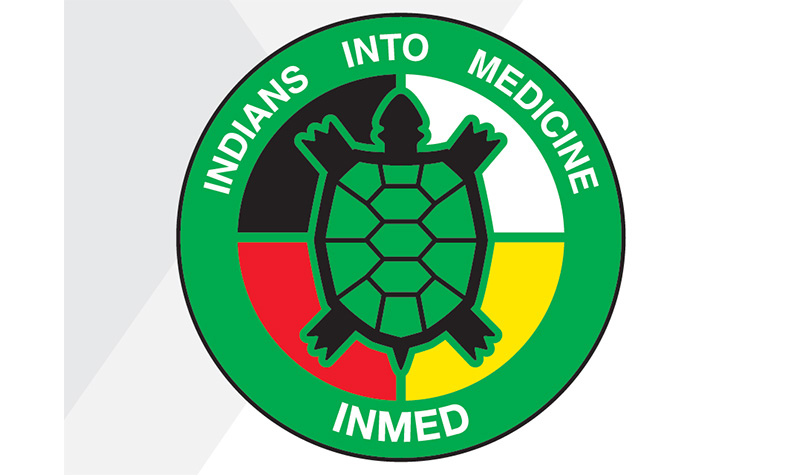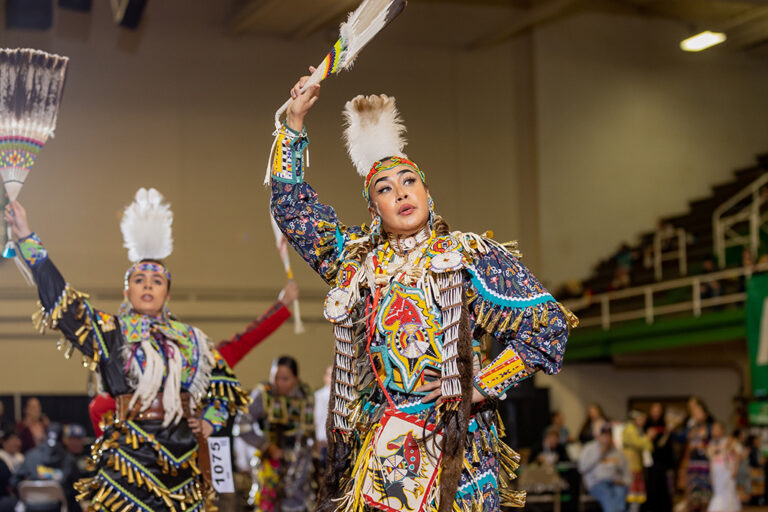From the Dean: Why diversity, inclusion, and collaboration matter
 An interesting and informative article was just published by the Association of American Medical Colleges (AAMC). It deals with the challenges and successes of four minority students and the impact of various programs aimed at increasing the number of underrepresented minorities in medical schools across the country. One of our rising fourth-year students, Celeste Colegrove, was featured in the article. A member of the Central Council of the Tlingit and Haida Indian Tribes of Alaska, Ms. Colegrove credits our Indians into Medicine (INMED) program for providing a warm, welcoming, and supportive environment for her maturation as a physician-to-be. One of the striking statistics quoted in the article is that 93 percent of medical schools enroll three or fewer American Indian/Alaska Native (AI/AN) students annually. While certainly it is commendable for all schools to make earnest efforts to be more inclusive and diverse, I’m not sure that having such a small cohort of AI/AN students at a typical medical school is optimal. That’s another reason why I think our INMED program is so important – not only is there a much larger cohort of fellow AI/AN medical students (we had 27 such students enrolled in the INMED program this past academic year across all four years of medical school, not to mention the 17 AI/AN students in our Indigenous Health doctorate program), but there also is a large cohort of AI/AN faculty and staff here. As such, the program has a more inclusive and welcoming feel to it. I’ve written before about the negative impact that isolation and the lack of social contact has had on most of our students due to the pandemic; imagine if a student has to deal with all of that along with a paucity of people who share a common culture and background. So, thanks Celeste for the INMED callout and best wishes for the future!
An interesting and informative article was just published by the Association of American Medical Colleges (AAMC). It deals with the challenges and successes of four minority students and the impact of various programs aimed at increasing the number of underrepresented minorities in medical schools across the country. One of our rising fourth-year students, Celeste Colegrove, was featured in the article. A member of the Central Council of the Tlingit and Haida Indian Tribes of Alaska, Ms. Colegrove credits our Indians into Medicine (INMED) program for providing a warm, welcoming, and supportive environment for her maturation as a physician-to-be. One of the striking statistics quoted in the article is that 93 percent of medical schools enroll three or fewer American Indian/Alaska Native (AI/AN) students annually. While certainly it is commendable for all schools to make earnest efforts to be more inclusive and diverse, I’m not sure that having such a small cohort of AI/AN students at a typical medical school is optimal. That’s another reason why I think our INMED program is so important – not only is there a much larger cohort of fellow AI/AN medical students (we had 27 such students enrolled in the INMED program this past academic year across all four years of medical school, not to mention the 17 AI/AN students in our Indigenous Health doctorate program), but there also is a large cohort of AI/AN faculty and staff here. As such, the program has a more inclusive and welcoming feel to it. I’ve written before about the negative impact that isolation and the lack of social contact has had on most of our students due to the pandemic; imagine if a student has to deal with all of that along with a paucity of people who share a common culture and background. So, thanks Celeste for the INMED callout and best wishes for the future!
Another interesting recent article is an op-ed by Mike Jacobs in the Grand Forks Herald. Mike lauds the current stability of the university system in North Dakota and also highlights the positive working relationship between UND and NDSU, the two research universities in the system. He emphasizes how well we are working together, with competition reserved for the athletic field. My colleagues and I made just that point in a letter to the editor that was published four years ago. Joined by former UND College of Engineering and Mines Dean Hesham El-Rewini, NDSU College of Health Professions Dean Charles Peterson, and former NDSU College of Engineering Dean Gary Smith, we wrote “Don’t get us wrong. … We believe in competition and believe that it can stimulate each institution to even greater achievements. But there is a place for competition and a place for collaboration. It’s one thing to compete on the gridiron, but we are proud of the collaboration and cooperation that is ongoing – and growing between UND and NDSU in areas where it really matters: That’s in the education and research arena that can improve the lives of students and indeed all citizens living in North Dakota.” I’m pleased to agree with Mr. Jacobs that the relationship has only grown stronger over the years.
There are three great recent examples of are how we are working together. The first is how our two public health programs joined forces to deal with various challenges posed by the pandemic. The second is in the research arena where we have built upon the already strong individual collaborations among UND and NDSU faculty to create higher-level structural programs such as the federally funded Established Program to Stimulate Competitive Research (EPSCoR), the Dakota Cancer Collaborative on Translational Activity (DaCCoTA) Institutional Development Award (IDeA) Networks for Clinical and Translational Research (CTR), and the IDeA Networks of Biomedical Research Excellence (INBRE). These programs support scholarship and training across our state with extramural funds from the National Institutes of Health and the National Science Foundation in ways that would not have been possible to achieve for either institution acting alone. And the third example is how we worked together to form a working group composed of faculty and staff from NDSU and UND who joined me (as the state’s Chief Health Strategist) to oversee the development of a strategic plan for health for North Dakota. That plan is now under the guidance of the North Dakota Department of Health and the new State Health Officer Dr. Nizar Wehbi. Stay tuned as Nizar and his team develop the plan that has the modest goal of making North Dakotans the healthiest people in the country!
Joshua Wynne, MD, MBA, MPH
Vice President for Health Affairs, UND
Dean, UND School of Medicine & Health Sciences



